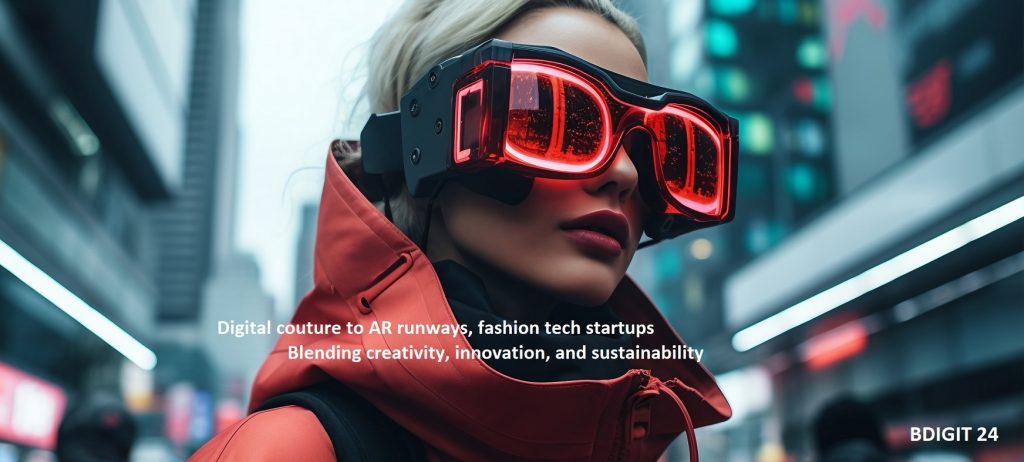From digital couture to AR runways, fashion tech startups are reshaping the industry—blending creativity, innovation, and sustainability.
A New Era of Fashion: When Style Meets Technology
The fashion industry, once bound by fabric and seasons, is undergoing a seismic shift. In an age where technology influences every aspect of life, fashion is no exception. One of the most disruptive trends in this space is fashion tech, a fusion of high technology and high fashion that is redefining the rules of design, sustainability, and self-expression.
Among the pioneering brands leading this transformation is Auroboros, a London-based fashion tech startup known for creating digital-only couture and using augmented reality (AR) to revolutionize the way we interact with fashion.
Auroboros: The Vanguard of Digital-Only Fashion
Founded in 2020, Auroboros burst onto the global stage with a bold concept: fashion that exists only in the digital realm. Their designs are not made of fabric, but of pixels, visualized through AR and worn on virtual avatars or via filters on social media.
The brand debuted at London Fashion Week, marking a historical moment as the first digital fashion house to present on a major runway. Their collection combined biotechnology, AR, and digital design, offering clothing that adapts and evolves in real time.
What sets Auroboros apart is not just its innovation, but its underlying message: fashion can be eco-conscious and borderless, liberated from the environmental cost of physical production.
The Sustainability Imperative
The fashion industry is the second-largest polluter globally, accounting for 10% of global carbon emissions and nearly 20% of wastewater, according to the United Nations. Every year, millions of tons of clothing end up in landfills due to fast fashion trends and overproduction.
Here’s where fashion tech startups like Auroboros offer a radical alternative:
- Zero Waste Production: Digital fashion requires no fabric, dyes, or transportation, drastically reducing its carbon footprint.
- Unlimited Creativity: Designers can create without the constraints of material sourcing or factory timelines.
- Circular Fashion Economy: NFTs and blockchain integration are enabling digital ownership and resale, creating new value chains.
According to a 2023 Statista report, the digital fashion market is expected to reach $4.8 billion by 2030, driven by Gen Z and millennials who prioritize sustainability and tech-forward experiences.
Fashion as a Digital Experience
In the age of Instagram, TikTok, and virtual influencers, what we wear online matters just as much—if not more—than what we wear in real life. Fashion tech allows individuals to curate a digital wardrobe that evolves with their online identity.
Key features of this emerging trend include:
- Augmented Reality Try-Ons: Virtual mirrors and AR filters allow customers to try on clothes in real-time using just their smartphone.
- Avatars and Metaverse Fashion: From gaming to social platforms, virtual worlds now offer users the chance to purchase and flaunt digital outfits.
- Fashion NFTs: Non-fungible tokens have introduced the concept of unique, ownable digital garments, some selling for thousands of dollars.
In 2022, Dolce & Gabbana launched a digital couture collection via NFTs, generating $6 million in sales, showcasing the potential of this new business model.
Challenges and Criticism
Despite the excitement, fashion tech is not without challenges:
- Accessibility: High-end digital couture is often expensive and out of reach for many.
- Tech Barriers: Not all users are comfortable with AR or blockchain, limiting adoption.
- Authenticity Debates: Traditionalists argue that digital fashion lacks the tactile quality that makes clothing personal and real.
However, with each passing year, these concerns are being addressed. User-friendly platforms, improved accessibility, and ethical branding are helping bridge the gap between tech and tradition.
The Future: Where Do We Go from Here?
The question is no longer if fashion tech will become mainstream, it’s when. As major fashion houses begin to experiment with virtual showrooms and as startups like Auroboros continue to innovate, the lines between digital and physical fashion will blur even further.
Upcoming trends to watch:
- AI-generated fashion designs tailored to user preferences.
- Smart textiles that merge wearable tech with style.
- Digital twins of real garments for metaverse use.
- Interactive fashion storytelling using immersive 3D experiences.
Style Beyond the Physical
The rise of fashion tech, led by innovators like Auroboros, signals a paradigm shift in how we think about clothing, sustainability, and identity. By harnessing digital tools, the fashion world is becoming more inclusive, environmentally responsible, and experiential than ever before.
For consumers and creators alike, this is an invitation to imagine a world where fashion is no longer limited by physicality, but enhanced by it.
FashionTech #DigitalFashion #Sustainability #AugmentedReality #Auroboros #TechInnovation #FutureOfFashion #AlissaAulbekova #PaulaSello


